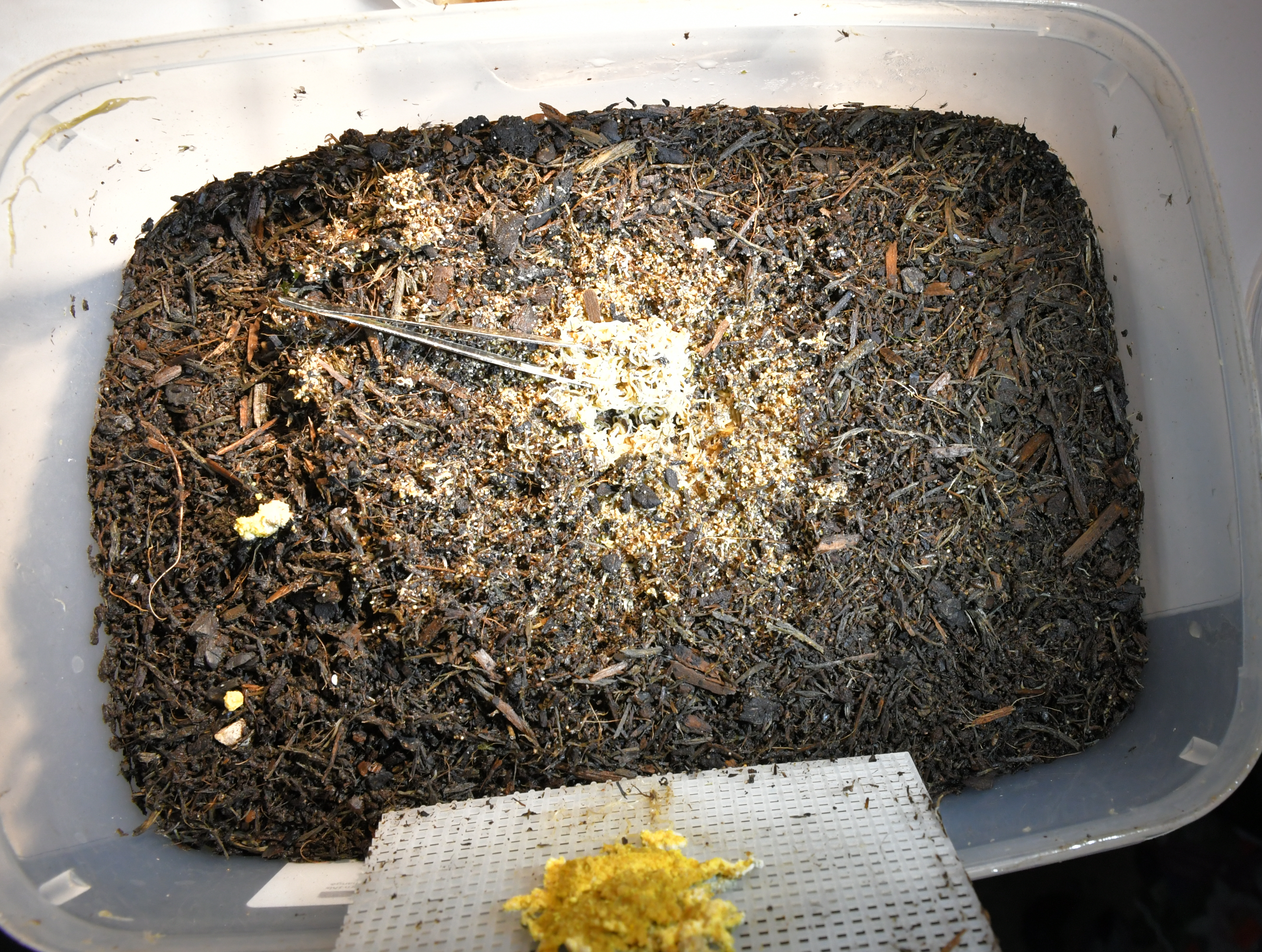White Worms
Introduction
Here are some notes on the way I culture white worms. I don't claim this is the best technique as I still get issues with contamination from mites, soil flies, springtails etc. The contamination I see whilst unpleasant are usually more of a nuisance than anything else.
It is very important to perservere with white worms as they are a fantastic food source. For me adding white worms to a healthy pair of killifish is often a real trigger for them to lay eggs.
Container
I use 1l and 2l ice-cream carton-type plastic containers. I cut a large hole in the lid and add an equal-sized piece of sponge to it to provide aeration. Good aeration is critical. Try to seal this well if you can to prevent flies from entering the culture.
Culture medium
Peat-free compost is a good culture medium to use. You want the cheapest/coursest one you can find with 'added twigs'. The twigs help to keep the culture aerated and stop it from compacting. I have tried coir and while you can make it work, it does have a tendancy dry out or get waterlogged it also compacts easily. You can counter this by adding gravel or vermiculite but then these tend to get transferred to your tanks when you feed.
Moisture/Aeration
Describing the moisture content of the culture medium is difficult. It is easy to drown the worms if you keep your culture too wet. Conversely it is hard to keep your culture too dry. So if in any doubt try to keep the culture dry (hence the emphasis on aeration). I add a small amount of tank water (~5-15mls) onto the food when I feed them. This attracts the worms to the food (and drink) and stops them wandering. It also keeps their bedding dry. That is probably about all the water they need through the winter, in the summer months you may need to add more water via spraying.
Food
To feed the white worms I feed mainly porridge oats with added nutritional yeast. To this base you can add smaller quantities of milk powder, turmeric, other mineral-rich cereals e.g. bran flakes/Special K/Corn flakes dog/cat biscuits, fish pellets/flake. I blend all of this to create a fine powder. Feeding a powder is great because you can judge exactly the right amount to feed. Also as a powder it is much easier for the worms to eat, meaning it is less likely to go mouldy. I also prefer this to feeding slices of bread and yoghurt etc. as I can keep the food as an ever-ready instant powder.
Feeding
When you setup a new culture start feeding with small amounts and work your way up, aim for the food to disappear in a day or two. I add the food (and water) to the middle of the culture. Very quickly you will notice that the worms congregate around the food ball, living in the medium and feeding on the food in the centre. You do not want food to lie about in the culture going mouldy, attracting pests. If food does go mouldy try to remove it.
Crash prevention
It is an extremely good idea to keep several containers running at any one time all at different concentration and ages. If a culture crashes you are not likely to lose all your worms but only a single culture. Sometimes a culture may boom. You need to either freeze the excess or use them to setup fresh cultures with. If you leave a booming culture it will quickly crash and you will loose all of the worms.
Harvesting
I harvest with a pair of tweezers. You may need to dig into the medium to get to the worms and there are often far more hiding in the medium than immediately visible. In the image below the worms are living beneath the surface, as far out as the edge of the tweezers in a circle. I add the worms to a pot with water in it and then use a pippette with a cut end to pipette the worms into the tanks.
